Summary
32" silver curved consumer TV from JVC with component from 2001. This year marked when the D-Series and other chassis experienced cost cutting. They were still quite good, nevertheless.
Literature
Notes
The 2001 D-Series and other component sets by JVC models featured a new chassis with a Toshiba jungle chip. The chassis also has some cost cutting with less capacitors in the power supply, resulting in increased raster bloom and geometrical warping. Oh goody. But the chassis does have the upside of using a 3-line comb filter for composite video, which is an improvement over the previous chassis's 2-line comb filter.
This specific model features two s-video inputs, which is handy.
According to JVC's official webpage for this model they claim the set has "800 Lines Horizontal Resolution." This is utterly preposterous, as the true horizontal resolution is closer to half that, about 400-450 lines.
The tube in this model varies, but the one featured in this article uses a lovely Panasonic CPT. (The "M" beside the serial number stands for Matsushita, aka Panasonic.)
This set has nasty red push, significantly more saturation compared to the previous D-Series chassis. Red's are blown out, purples are pinkish, and yellows have an orange tinge to them. Thankfully, there is a way to dial it back almost completely with a few tweaks in the service menu:
For TV channels, RF, composite, and s-video, you set R Y GAIN and CD MATRIX to “000.” Then switch over to component input and turn CMP R Y GAIN and CMP CD MATRIX to “000.” .
Overall, if you find a D-Series with a healthy tube and disable the red push, (like the one in this article) I'd say you'll be quite pleased with it.
Composite 240p Performance, Disabling Vertical Edge Enhancement
by Eli Krause
For composite decoding this set uses a Toshiba TC90A53N, a 3-line digital comb filter. One beneficial feature of this comb filter is its "1-line color dot interference reducer circuit". Depending on the console/revision, dot artifacting ranges from slight to moderate, and blending effects may be broken. Using an external notch filter to decode composite instead (such as is available in a RetroTink 2X, 5X, etc.) and sending that to the component input would blend all dithering patterns and remove nearly all dot artifacts.
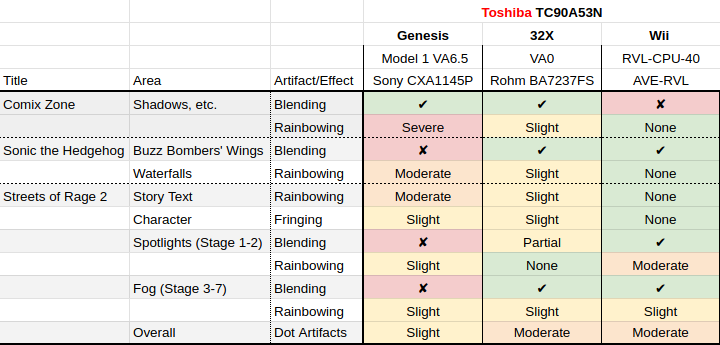
Just as velocity scan modulation increases the contrast along horizontal edges, vertical edge enhancement increases the contrast along vertical edges. To reduce this to its minimum, the high signal sent to pin 17 of the comb filter must be brought low which can be achieved by removing the resistor leading to that pin. On the AV-20D202 it is R239. On the AV-32D502 it is R247.
Gallery
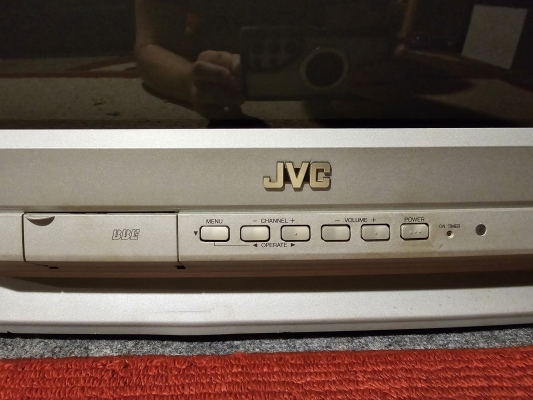


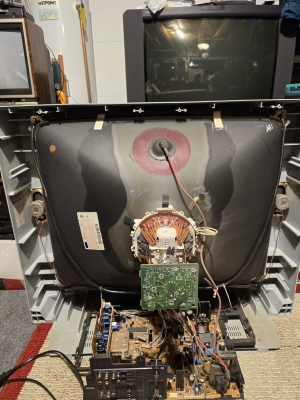
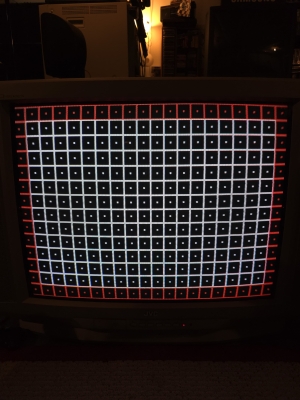




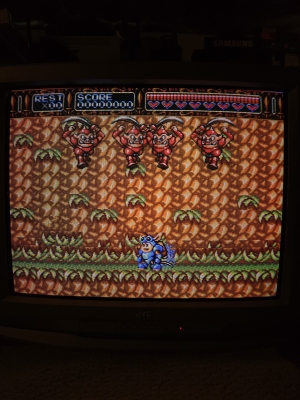
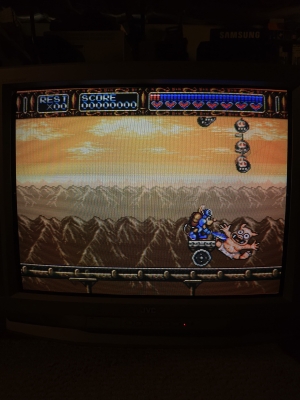

 This work is licensed under a
This work is licensed under a